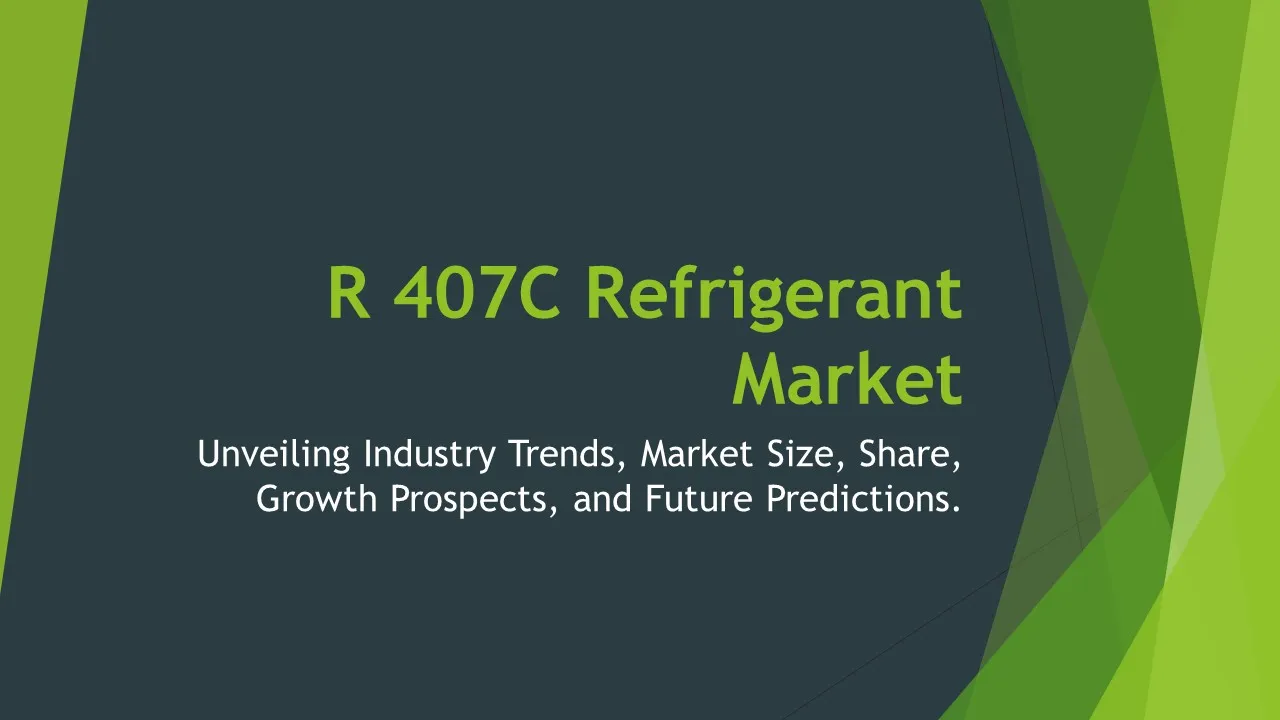Feldspar
Feldspar Market Segments - by Product Type (Plagioclase Feldspar, Potassium Feldspar, Sodium Feldspar, Anorthite, and Others), Application (Glassmaking, Ceramics, Fillers, Enamel, and Others), Distribution Channel (Direct Sales, Indirect Sales), Region (North America, Europe, Asia Pacific, Latin America, Middle East & Africa) - Global Industry Analysis, Growth, Share, Size, Trends, and Forecast 2025-2035
- Report Preview
- Table Of Content
- Segments
- Methodology
Feldspar Market Outlook
The global feldspar market was valued at approximately USD 5 billion in 2022 and is projected to reach around USD 6.5 billion by 2035, with a compound annual growth rate (CAGR) of approximately 4.5% during the forecast period from 2025 to 2035. This growth is primarily driven by the increasing demand for feldspar in various applications such as glassmaking, ceramics, and fillers. With the expansion of the construction and automotive industries, the demand for high-quality ceramics has surged, prompting manufacturers to seek out premium grade feldspar. Additionally, the rising consumer preference for eco-friendly and sustainable materials further fuels the growth of the feldspar market, as it plays a critical role in producing environmentally friendly products. Furthermore, technological advancements in mining and processing techniques are enabling manufacturers to extract and utilize feldspar more efficiently, thus contributing to overall market growth.
Growth Factor of the Market
The growth of the feldspar market is attributed to several key factors, including the escalating demand for ceramic products in both residential and commercial sectors. As urbanization and population growth continue to surge, the need for durable and aesthetically pleasing materials for construction is on the rise. Additionally, innovations in the glass manufacturing industry, which increasingly utilizes feldspar to enhance product quality and performance, are driving market expansion. Another significant factor is the burgeoning automotive sector, where feldspar is employed to improve the thermal stability and mechanical strength of components. Moreover, the continuous exploration of new applications of feldspar, such as in the production of advanced materials, further propels market growth. Lastly, the increasing focus on sustainable mining practices and responsible sourcing is enhancing market dynamics, as stakeholders align with environmental regulations and consumer expectations.
Key Highlights of the Market
- Projected market growth from USD 5 billion in 2022 to USD 6.5 billion by 2035.
- CAGR of approximately 4.5% anticipated from 2025 to 2035.
- Rising demand for feldspar in glassmaking and ceramics due to urbanization.
- Technological advancements facilitating efficient extraction and processing of feldspar.
- Growing emphasis on sustainable practices within the mining and manufacturing sectors.
By Product Type
Plagioclase Feldspar:
Plagioclase feldspar is a significant segment of the feldspar market, primarily utilized in the manufacturing of ceramics and glass. Its unique properties, such as low expansion and excellent strength, make it ideal for high-temperature applications. The demand for plagioclase feldspar is driven by its use in the production of ceramic tiles, porcelain, and sanitary ware. Furthermore, the increasing trend towards lightweight and high-strength materials in construction is propelling the demand for plagioclase feldspar as a prime constituent in various formulations. As industries continue to prioritize the performance and durability of their products, the need for high-quality plagioclase feldspar is expected to grow steadily throughout the forecast period.
Potassium Feldspar:
Potassium feldspar is another crucial product type within the feldspar market, known for its exceptional properties that enhance the quality of finished products in applications such as ceramics and glassmaking. It plays an essential role in increasing the melting point and improving the overall durability of glass products. The rising demand for high-performance ceramics in industries such as automotive and construction is likely to drive the consumption of potassium feldspar. Additionally, its application in the production of enamels and glazes is poised to benefit from the growing trend of innovative ceramic design, further bolstering market growth. As manufacturers continue to innovate and enhance their product offerings, potassium feldspar will remain a key ingredient in their formulations.
Sodium Feldspar:
Sodium feldspar, valued for its distinct chemical and physical properties, serves as a vital component in the glassmaking and ceramics industries. It aids in reducing the melting point of raw materials, facilitating more energy-efficient production processes. The ongoing expansion of the glass industry, particularly in regions experiencing rapid urbanization, is anticipated to boost demand for sodium feldspar. Moreover, the growing trend towards sustainability and environmental responsibility in manufacturing processes makes sodium feldspar a preferred choice among producers looking for eco-friendly solutions. Consequently, the sodium feldspar segment is expected to witness substantial growth as industries strive for better performance and reduced energy consumption.
Anorthite:
Anorthite, while not as widely used as other feldspar types, holds a crucial niche within the market due to its unique properties. It is primarily recognized for its application in the production of high-alumina ceramics and specialty glass. The demand for anorthite is growing in specialized applications that require superior strength and thermal stability. As technological advancements continue to emerge in the glass and ceramics sectors, the potential for anorthite's applications is expanding, making it a segment worth monitoring. Furthermore, the increasing emphasis on high-performance materials in various industries will likely lead to a surge in demand for anorthite, thereby enhancing its market presence.
Others:
This category encompasses various lesser-known feldspar types that may serve specific applications or niche markets within the feldspar industry. These products often cater to unique manufacturing requirements, and their specific properties can provide competitive advantages in certain applications. As manufacturers continue to explore and develop new materials, the demand for these 'other' feldspar types is expected to see gradual growth. The growing emphasis on customization and innovation in material science is providing opportunities for these lesser-known feldspar types to gain traction within their respective markets, contributing to the overall dynamics of the feldspar industry.
By Application
Glassmaking:
Glassmaking is one of the primary applications driving the demand for feldspar, as it is a key ingredient that contributes to the overall performance and quality of glass products. Feldspar acts as a flux, lowering the melting temperature of the silica and promoting the formation of a glassy phase. The increasing demand for high-quality glass in various sectors, including construction, automotive, and packaging, is expected to bolster the feldspar market significantly. As the global glass industry expands, especially in emerging economies where urbanization is on the rise, feldspar will play a critical role in sustaining this growth. Innovations in glass production techniques and the development of new glass products will further enhance the demand for feldspar in this application.
Ceramics:
The ceramics application segment is another substantial contributor to the feldspar market, as feldspar is extensively used in the production of ceramic products such as tiles, sanitary ware, and tableware. Its properties, including low thermal expansion and excellent strength, make it an essential component in ceramic formulations. The surge in demand for ceramic products, driven by urbanization and changing consumer preferences, is anticipated to propel the growth of feldspar in this sector. Moreover, the trend towards decorative and high-performance ceramics is creating additional opportunities for feldspar manufacturers as they strive to meet the evolving demands of consumers. The ongoing innovation in ceramic designs and formulations will continue to drive the market for feldspar in this application.
Fillers:
Feldspar serves as an essential filler material in various industries, including paints, coatings, and plastics, due to its ability to enhance product performance and reduce production costs. The demand for high-quality fillers, driven by the growth of the construction and automotive sectors, is expected to boost the feldspar market significantly. As manufacturers seek to improve the properties of their products while minimizing costs, the use of feldspar as a filler will become increasingly prevalent. Furthermore, the shift towards environmentally friendly materials and sustainable production practices is likely to encourage the adoption of feldspar in filler applications, as it aligns with the growing consumer preference for eco-friendly products. Consequently, the fillers segment is poised for steady growth in the feldspar market.
Enamel:
The enamel segment of the feldspar market is primarily driven by the rising demand for high-quality enamel coatings in various applications, including ceramics, metal, and glass. Feldspar's unique properties, such as its ability to enhance the glaze's aesthetics and prevent defects, make it a valuable ingredient in enamel formulations. The growth of the ceramics industry, particularly concerning tiles and sanitary ware, is expected to drive the demand for feldspar in enamel applications. Additionally, as manufacturers focus on producing innovative and high-performance enamel products, the role of feldspar will likely expand, contributing to overall market growth. The increasing application of enamel in both industrial and consumer markets further amplifies the growth potential of feldspar in this segment.
Others:
The 'Others' category encompasses various applications of feldspar that do not fit into the mainstream segments but still provide significant contributions to the overall market. This can include niche applications in advanced materials, ceramics for electronics, and even specialty glass products. The growth of these unique applications often hinges on specific industry developments and technological advancements. As researchers and manufacturers continue to explore new uses for feldspar, this category is expected to see gradual growth, driven by innovation and the need for specialized materials. The exploration of new applications can open doors to untapped market opportunities for feldspar producers, thereby enhancing the overall competitive landscape.
By Distribution Channel
Direct Sales:
Direct sales represent a crucial distribution channel in the feldspar market, allowing manufacturers to engage directly with consumers and businesses. This channel provides opportunities for building strong relationships with clients, ensuring tailored solutions that meet specific needs. Direct sales facilitate better communication, allowing manufacturers to convey the unique properties and benefits of their feldspar products effectively. As the demand for high-quality and specialized feldspar continues to grow, the direct sales approach is expected to gain traction, with manufacturers focusing on enhancing customer satisfaction and service levels. By adopting a direct sales model, feldspar producers can strengthen their market presence and gain a competitive edge in the rapidly evolving industry.
Indirect Sales:
Indirect sales channels also play a significant role in the feldspar market, as they involve various intermediaries such as distributors, wholesalers, and retailers. This approach allows manufacturers to reach a broader audience and penetrate diverse markets effectively. The use of indirect sales channels enables feldspar producers to leverage established distribution networks, helping them access different geographic regions and customer segments. This flexibility is particularly beneficial for companies looking to expand their market share without overextending their resources. Furthermore, the growth of e-commerce and online marketplaces is enhancing the indirect sales landscape, leading to increased visibility and accessibility for feldspar products in the market. As businesses adapt to changing consumer behavior and preferences, indirect sales channels are likely to see significant growth in the coming years.
By Region
The regional analysis of the feldspar market demonstrates varying degrees of growth and demand across different areas. North America is expected to hold a substantial share of the market due to the presence of established glass and ceramics industries. The ongoing investment in construction and infrastructure development is further propelling the need for feldspar in the region. In 2023, the North American feldspar market was valued at approximately USD 1.2 billion, with a projected CAGR of around 3.9% through 2035. This growth is largely driven by the increasing consumption of feldspar in ceramics and glass applications, as well as the rising trend for sustainable materials in manufacturing. The region's commitment to innovation and quality will continue to support its position as a leading market for feldspar.
In Europe, the feldspar market is also witnessing promising growth, primarily driven by the flourishing ceramics and glass industries. The region's emphasis on high-quality products and innovative applications is enhancing the demand for feldspar in various forms. As of 2023, the European feldspar market was valued at around USD 1.5 billion, with expectations of moderate growth fueled by rising investments in construction and tourism sectors. The increasing focus on eco-friendly materials and sustainable practices in manufacturing is further driving the market in this region. Meanwhile, Asia Pacific is emerging as a significant growth region, with expanding industrial activities and increasing urbanization leading to a heightened demand for feldspar, particularly in countries like China and India. The Asia Pacific feldspar market is expected to grow at a robust CAGR of around 5.2% during the forecast period, fueled by the rapid expansion of the glass and ceramics industries.
Opportunities
The feldspar market presents numerous opportunities for manufacturers and stakeholders to capitalize on emerging trends and innovations. One of the most significant opportunities lies in the growing demand for advanced ceramics and glass products, which often require specialized feldspar formulations. As industries continue to prioritize product performance, durability, and aesthetics, manufacturers can explore new applications for feldspar in high-tech materials, including electronics and aerospace components. Moreover, the push for sustainability in manufacturing processes presents an opportunity for feldspar producers to align their offerings with eco-friendly initiatives, thereby attracting environmentally conscious consumers. By developing sustainable mining practices and eco-friendly product formulations, stakeholders can differentiate themselves in a competitive market and foster long-term growth.
Furthermore, the global trend towards urbanization and infrastructure development creates a favorable environment for the feldspar market. As construction activities ramp up in emerging economies, the demand for ceramic tiles, sanitary ware, and glass products is expected to surge. This trend is further bolstered by the increasing popularity of home renovation and interior design projects, leading to higher consumption of feldspar in residential applications. Manufacturers can leverage these opportunities by expanding their production capacities, enhancing their distribution networks, and investing in research and development to innovate new feldspar-based products. The exploration of strategic partnerships and collaborations with key players in the ceramics and glass industries will also enable stakeholders to tap into new markets and drive business growth.
Threats
Despite the promising growth prospects in the feldspar market, several threats could potentially hinder progress. One critical concern is the volatility of raw material prices, which can negatively impact production costs for feldspar manufacturers. Fluctuations in the prices of energy, transportation, and mining inputs can lead to unpredictable changes in operational expenses, making it challenging for companies to maintain profitability. Furthermore, as environmental regulations become more stringent, feldspar producers may face additional compliance costs and operational complexities. Companies must remain vigilant and adaptable to navigate the evolving regulatory landscape, which could impose restrictions on mining practices and increase the costs associated with sustainable operations.
Additionally, competition within the feldspar market is intensifying, with the entry of new players and alternative materials threatening to disrupt traditional applications. Innovations in substitute materials, such as synthetic alternatives, could pose challenges for feldspar producers striving to maintain market share. To combat these threats, stakeholders will need to invest in research and development to enhance product quality and performance, ensuring that feldspar remains competitive in the face of emerging alternatives. Building strong relationships with customers, focusing on innovation, and pursuing diversification strategies will be essential for overcoming these challenges and sustaining growth in the feldspar market.
Competitor Outlook
- Imerys Minerals
- Feldspar Australia
- Alkali Feldspar Corporation
- Minerals Technologies Inc.
- Global Feldspar Corporation
- Hochfeld Minerals
- Platinum Minerals
- Viva Group
- Quarzwerke GmbH
- American Potash and Chemical Corporation
- China National Minerals
- Ball Clay Industries
- Sun Minerals
- Sibelco
- Oman Mining Company
The competitive landscape of the feldspar market is characterized by a diverse array of players, ranging from large multinational corporations to small and medium-sized enterprises. Key competitors are focusing on enhancing their production capabilities, optimizing supply chain efficiencies, and investing in research and development to create unique, high-quality feldspar products. The market is also witnessing increased collaboration among industry players, with partnerships and joint ventures aimed at leveraging complementary strengths and expanding market reach. Such alliances are expected to foster innovation and allow companies to tap into new markets more effectively.
Companies like Imerys Minerals and Sibelco dominate the feldspar market due to their extensive product portfolios, strong distribution networks, and commitment to sustainability. Imerys Minerals, for instance, is known for its high-quality feldspar products utilized in ceramics, glass, and other applications. Their ongoing investments in sustainable mining practices and innovative product development enable them to maintain a competitive edge. Similarly, Sibelco's global presence and innovative approaches to sourcing and processing materials ensure that they remain a formidable player in the feldspar market.
Moreover, firms such as Minerals Technologies Inc. and China National Minerals are also making strides in market competitiveness by focusing on technological advancements and eco-friendly practices. Minerals Technologies, for instance, has developed specialized feldspar products aimed at meeting specific industry needs while adhering to stringent environmental regulations. On the other hand, China National Minerals leverages its extensive mining operations and distribution network to secure a strong foothold in the Asia Pacific region, where demand for feldspar continues to grow rapidly. This competitive landscape indicates a robust and dynamic market where innovation and sustainability are becoming critical components of success.
1 Appendix
- 1.1 List of Tables
- 1.2 List of Figures
2 Introduction
- 2.1 Market Definition
- 2.2 Scope of the Report
- 2.3 Study Assumptions
- 2.4 Base Currency & Forecast Periods
3 Market Dynamics
- 3.1 Market Growth Factors
- 3.2 Economic & Global Events
- 3.3 Innovation Trends
- 3.4 Supply Chain Analysis
4 Consumer Behavior
- 4.1 Market Trends
- 4.2 Pricing Analysis
- 4.3 Buyer Insights
5 Key Player Profiles
- 5.1 Sibelco
- 5.1.1 Business Overview
- 5.1.2 Products & Services
- 5.1.3 Financials
- 5.1.4 Recent Developments
- 5.1.5 SWOT Analysis
- 5.2 Viva Group
- 5.2.1 Business Overview
- 5.2.2 Products & Services
- 5.2.3 Financials
- 5.2.4 Recent Developments
- 5.2.5 SWOT Analysis
- 5.3 Sun Minerals
- 5.3.1 Business Overview
- 5.3.2 Products & Services
- 5.3.3 Financials
- 5.3.4 Recent Developments
- 5.3.5 SWOT Analysis
- 5.4 Imerys Minerals
- 5.4.1 Business Overview
- 5.4.2 Products & Services
- 5.4.3 Financials
- 5.4.4 Recent Developments
- 5.4.5 SWOT Analysis
- 5.5 Quarzwerke GmbH
- 5.5.1 Business Overview
- 5.5.2 Products & Services
- 5.5.3 Financials
- 5.5.4 Recent Developments
- 5.5.5 SWOT Analysis
- 5.6 Hochfeld Minerals
- 5.6.1 Business Overview
- 5.6.2 Products & Services
- 5.6.3 Financials
- 5.6.4 Recent Developments
- 5.6.5 SWOT Analysis
- 5.7 Platinum Minerals
- 5.7.1 Business Overview
- 5.7.2 Products & Services
- 5.7.3 Financials
- 5.7.4 Recent Developments
- 5.7.5 SWOT Analysis
- 5.8 Feldspar Australia
- 5.8.1 Business Overview
- 5.8.2 Products & Services
- 5.8.3 Financials
- 5.8.4 Recent Developments
- 5.8.5 SWOT Analysis
- 5.9 Oman Mining Company
- 5.9.1 Business Overview
- 5.9.2 Products & Services
- 5.9.3 Financials
- 5.9.4 Recent Developments
- 5.9.5 SWOT Analysis
- 5.10 Ball Clay Industries
- 5.10.1 Business Overview
- 5.10.2 Products & Services
- 5.10.3 Financials
- 5.10.4 Recent Developments
- 5.10.5 SWOT Analysis
- 5.11 China National Minerals
- 5.11.1 Business Overview
- 5.11.2 Products & Services
- 5.11.3 Financials
- 5.11.4 Recent Developments
- 5.11.5 SWOT Analysis
- 5.12 Minerals Technologies Inc.
- 5.12.1 Business Overview
- 5.12.2 Products & Services
- 5.12.3 Financials
- 5.12.4 Recent Developments
- 5.12.5 SWOT Analysis
- 5.13 Alkali Feldspar Corporation
- 5.13.1 Business Overview
- 5.13.2 Products & Services
- 5.13.3 Financials
- 5.13.4 Recent Developments
- 5.13.5 SWOT Analysis
- 5.14 Global Feldspar Corporation
- 5.14.1 Business Overview
- 5.14.2 Products & Services
- 5.14.3 Financials
- 5.14.4 Recent Developments
- 5.14.5 SWOT Analysis
- 5.15 American Potash and Chemical Corporation
- 5.15.1 Business Overview
- 5.15.2 Products & Services
- 5.15.3 Financials
- 5.15.4 Recent Developments
- 5.15.5 SWOT Analysis
- 5.1 Sibelco
6 Market Segmentation
- 6.1 Feldspar Market, By Application
- 6.1.1 Glassmaking
- 6.1.2 Ceramics
- 6.1.3 Fillers
- 6.1.4 Enamel
- 6.1.5 Others
- 6.2 Feldspar Market, By Product Type
- 6.2.1 Plagioclase Feldspar
- 6.2.2 Potassium Feldspar
- 6.2.3 Sodium Feldspar
- 6.2.4 Anorthite
- 6.2.5 Others
- 6.3 Feldspar Market, By Distribution Channel
- 6.3.1 Direct Sales
- 6.3.2 Indirect Sales
- 6.1 Feldspar Market, By Application
7 Competitive Analysis
- 7.1 Key Player Comparison
- 7.2 Market Share Analysis
- 7.3 Investment Trends
- 7.4 SWOT Analysis
8 Research Methodology
- 8.1 Analysis Design
- 8.2 Research Phases
- 8.3 Study Timeline
9 Future Market Outlook
- 9.1 Growth Forecast
- 9.2 Market Evolution
10 Geographical Overview
- 10.1 Europe - Market Analysis
- 10.1.1 By Country
- 10.1.1.1 UK
- 10.1.1.2 France
- 10.1.1.3 Germany
- 10.1.1.4 Spain
- 10.1.1.5 Italy
- 10.1.1 By Country
- 10.2 Feldspar Market by Region
- 10.3 Asia Pacific - Market Analysis
- 10.3.1 By Country
- 10.3.1.1 India
- 10.3.1.2 China
- 10.3.1.3 Japan
- 10.3.1.4 South Korea
- 10.3.1 By Country
- 10.4 Latin America - Market Analysis
- 10.4.1 By Country
- 10.4.1.1 Brazil
- 10.4.1.2 Argentina
- 10.4.1.3 Mexico
- 10.4.1 By Country
- 10.5 North America - Market Analysis
- 10.5.1 By Country
- 10.5.1.1 USA
- 10.5.1.2 Canada
- 10.5.1 By Country
- 10.6 Middle East & Africa - Market Analysis
- 10.6.1 By Country
- 10.6.1.1 Middle East
- 10.6.1.2 Africa
- 10.6.1 By Country
- 10.1 Europe - Market Analysis
11 Global Economic Factors
- 11.1 Inflation Impact
- 11.2 Trade Policies
12 Technology & Innovation
- 12.1 Emerging Technologies
- 12.2 AI & Digital Trends
- 12.3 Patent Research
13 Investment & Market Growth
- 13.1 Funding Trends
- 13.2 Future Market Projections
14 Market Overview & Key Insights
- 14.1 Executive Summary
- 14.2 Key Trends
- 14.3 Market Challenges
- 14.4 Regulatory Landscape
Segments Analyzed in the Report
The global Feldspar market is categorized based on
By Product Type
- Plagioclase Feldspar
- Potassium Feldspar
- Sodium Feldspar
- Anorthite
- Others
By Application
- Glassmaking
- Ceramics
- Fillers
- Enamel
- Others
By Distribution Channel
- Direct Sales
- Indirect Sales
By Region
- North America
- Europe
- Asia Pacific
- Latin America
- Middle East & Africa
Key Players
- Imerys Minerals
- Feldspar Australia
- Alkali Feldspar Corporation
- Minerals Technologies Inc.
- Global Feldspar Corporation
- Hochfeld Minerals
- Platinum Minerals
- Viva Group
- Quarzwerke GmbH
- American Potash and Chemical Corporation
- China National Minerals
- Ball Clay Industries
- Sun Minerals
- Sibelco
- Oman Mining Company
- Publish Date : Jan 21 ,2025
- Report ID : CH-21420
- No. Of Pages : 100
- Format : |
- Ratings : 4.5 (110 Reviews)









